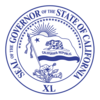José Joaquín de Arrillaga
José Joaquín de Arrillaga | |
|---|---|
| In office 1792–1794 | |
| Preceded by | José Antonio Roméu |
| Succeeded by | Diego de Borica |
| In office 1800–1814 | |
| Preceded by | Pere d'Alberní i Teixidor |
| Succeeded by | José Darío Argüello |
| Personal details | |
| Born | 1750 Aia, Gipuzkoa, Spain |
| Died | 1814 |
| Profession | Soldier |
José Joaquín de Arrillaga was an officer of Basque origin[1] born in Aia, Spain, who went on to become seventh (1792-1794) and tenth (1800–1814) governor of Alta California.
Governor
Arrillaga served the Spanish army in Northern Mexico and Texas in the 1780s and 1790s. He was the commandant at Loreto, Baja California Sur. He was well liked by all, known as an efficient and honest officer, so after the death of Governor José Antonio Roméu on April 9, 1792, Arrillaga was appointed acting Governor of California. He hoped to stay in Loreto and humbly rule from there, but he was ordered to the capital in Monterey, California and arrived in July 1793. To see the extent of the Spanish missions in California he traveled north and visited missions and the Presidio of San Francisco, returning to the capital in September 1793. Arrillaga worked to make the Presidios stronger and better run. In his tenure one new mission was founded: Mission Santa Inés (September 17, 1804) and it was a time of peace in the missions.


He had a meeting with George Vancouver an English officer of the British Royal Navy on his 1791–95 expedition, which explored and charted North America's northwestern Pacific Coast regions, including the coasts of contemporary Alaska, British Columbia, Washington and Oregon. He also explored the Hawaiian Islands and the southwest coast of Australia. Arrillaga wanted trading or business with him, specially when he found Vancouver had visited Mission Santa Clara de Asís without asking him if he could. But, Arrillaga did dined and showed him Spanish hospitality.
Arrillaga made a few (3 or 4) Monterey land grants to some of his men. He had a road to and ford across the Pajaro River made.[2]
In 1793 Vancouver made second trip to California and visited with Arrillaga again. Vancouver has just come from Hawaii, Arrillaga was upset that Vancouver had return to California and did not trust his claimed motives. Arrillaga ordered Vancouver men to return to their ship each night and put guards at all the store houses. He provided water and some supplies, Vancouver seeing the less of the Spanish hospitality from his first visit, departed and left behind some water and goods given to him.
Arrillaga had a meeting with Bodega y Cuadra, a Spanish commander of a naval expedition from San Blas, Baja California Sur, to Nootka Sound, (now British Columbia), he was sent to find out about British and Russian settlements in the Northwest Pacific coast. This was done due to treaty talks (Nootka Convention), with George Vancouver. The talks outcome was transfer of the Spanish outpost on Nootka Sound from Spain to Great Britain in 1795, shortly after Arrillaga departed office. Nootka Sound was just too far north for Spain to want to defend against British forces.[3]
Arrillaga was replaced in 1794 by Governor Diego de Borica. Diego de Borica died on August 19, 1800 and Arrillaga again was appointed Governor of Las Californias until 1804. In 1804 the two Californias were separated and Arrillaga was appointed the first Spanish Governor of Alta California, a post he served until his death.[4]
In 1806, he traded goods with the Russian Nikolai Rezanov, who had traveled from the Russian American Company in Sitka, Alaska.[5]: 59 [6] After Arrillaga death Spain change their policy and ordered the removal of the Russian settlements, being far way they were not able to always enforce this.[7]
Death
José Joaquín de Arrillaga died at Mission Nuestra Señora de la Soledad on July 25, 1813 and was buried there.[8] He is the only Spanish governor to be buried in California and US soil.[8][9] José Joaquín de Arrillaga's grave is at 36°24′17″N 121°21′19″W / 36.40472°N 121.35528°W.[10] The sign there has the inscription: "Known affectionately as "Papa" by his soldiers, companions and friends, he served twice as governor of California under Spanish rule. Upon his death in 1814 he was, at his request, garbed in the Franciscan habit and buried in the mission church." He was called "papa," because he worked hard to improve the lives of his men.

See also
References
- ^ Douglass, William A.; Douglass, Bilbao, J. (2005) [1975]. Amerikanuak: Basques in the New World. Reno, NV: University of Nevada Press. p. 192. ISBN 0-87417-625-5. Retrieved 16 February 2014.
{{cite book}}: CS1 maint: multiple names: authors list (link) - ^ History of California. 1884-90, By Hubert Howe Bancroft
- ^ History of California. 1884-90. page 529, By Hubert Howe Bancroft
- ^ History of California 2, page 204-7, Bancroft
- ^ Khlebnikov, K.T., 1973, Baranov, Chief Manager of the Russian Colonies in America, Kingston: The Limestone Press, ISBN 0919642500
- ^ Lands of Promise and Despair: Chronicles of Early California, 1535-1846, By Rose Marie Beebe and Robert M. Senkewicz
- ^ Fort Ross, The Old Magasin
- ^ a b "California Under Spanish Rule". www.books-about-california.com. Retrieved 2010-04-28.
- ^ findagrave.com José Joaquín de Arrillaga
- ^ waymarking.com, Jose Joaquin de Arrillaga

